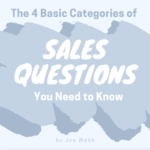To automate or not to automate? That is the email marketing question. Time is finite, but words are plentiful. Your team may be skilled in penning the greatest emails read by man, woman, or child, but they likely do not have the time. Automation plays a key role in building out a worthy lead management process.
How much automation should occur, then, is the question. If lead volume is low, it may be possible for a team to send personally scribed emails to each prospect for 90, 120, 180 days and into infinity, but it is unlikely they will do it. If you automate everything, it will destroy any and all rapport building and connection with potential clients.
How can automated emails help the follow-up process?
Most specifically, it allows your team to dedicate their energies on engaged customers rather than those who likely haven’t responded. Moreover, it gives your corporation the ability to design well-worded, grammatically-correct, email templates as they prefer them to be sent. No outside influence or last-minute “re-wording” by an agent or lead handler would be at stake. Automation never gets sick, tired, or bored of emailing. It is often a necessary product of email marketing campaigns to ensure messages are sent.
How can automated emails hurt the follow-up process?
By its name alone, automation doesn’t lend itself to creating personal contact with a potential buyer. Automated emails often fire out long after your team is communicating with the prospect. The content and questions within these messages are often either redundant or, worse, contradictory. Automation, without personalized content, can be a disservice to your team if engagement has previously occurred.
The email marketing your company conducts must be considered “marketing messages”. And there are only two things your marketing messages should be doing. They should be eliciting contact and replies or they should be building value. You elicit contact by asking pertinent questions to the customers’ journey or research. They can ask to offer valuable insight, deals, or incentives with a reply back. If value building is the goal, you can impress upon them the benefits of your product/service, your buying process, your store, your people, or yourself. Through multimedia or text, there are countless ways to automate the message of who you are.
Therein lies the answer. Automation is key, but not all messages are to be automated. Your emails either ask questions of your prospects or they don’t. However, with a strong value proposition within the email marketing templates, there is very little negative in sending that type of message in automated form. So, if you are looking to ensure a seamless manual and automated lead management or email marketing process, only automate your value-building emails. They can be automated on the second day or contact or the second year, it doesn’t matter, provided the topic of the message is to build value, and not elicit contact.
As your goal should always be to include personalized content through the use of interactive merge fields and data science, today’s CRMs aren’t always capable of that level of personalization. So do your organization a favor and pay close attention to the goal behind your email templates as they will guide your automation. Need more help? Ask the experts.









